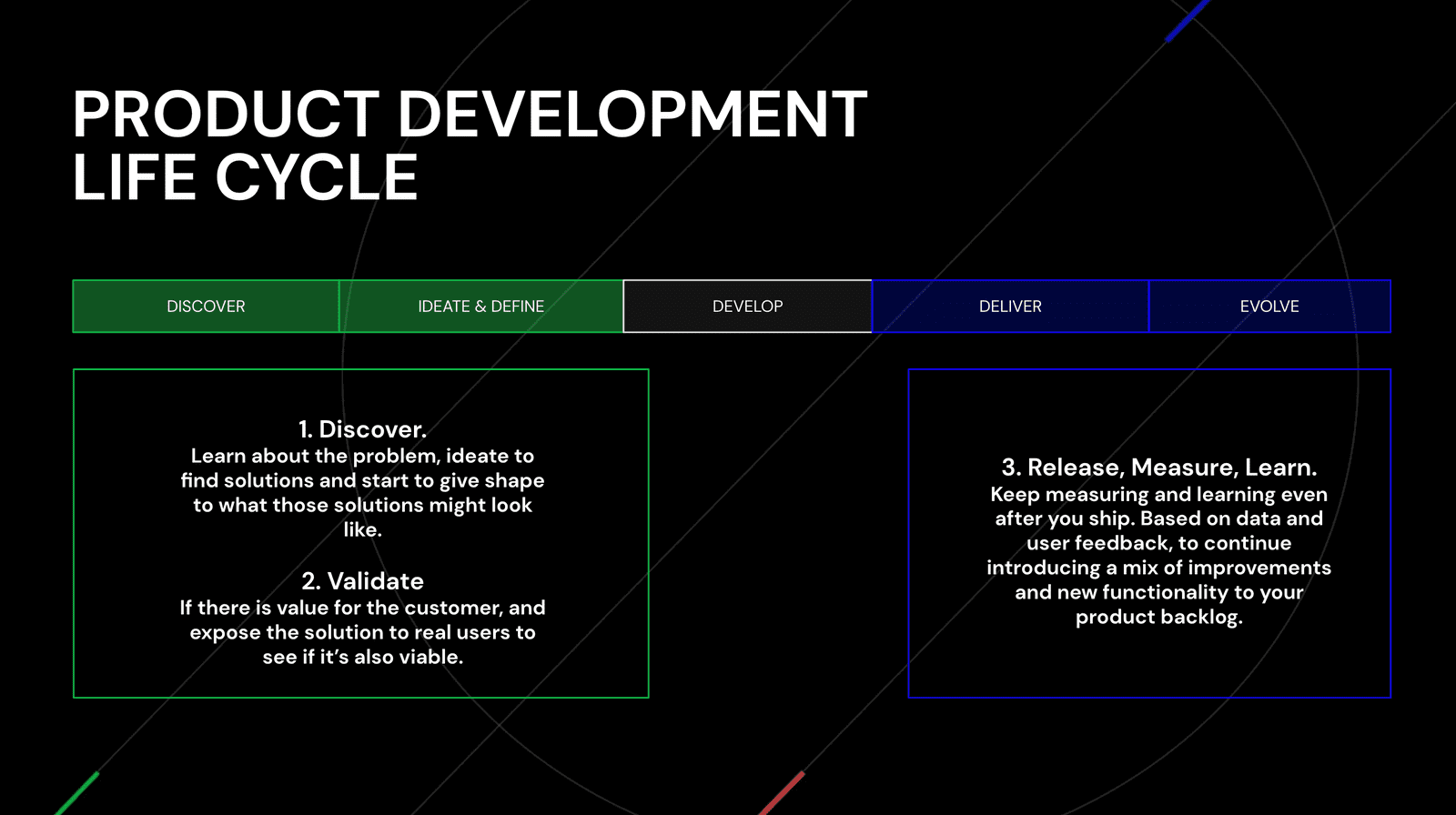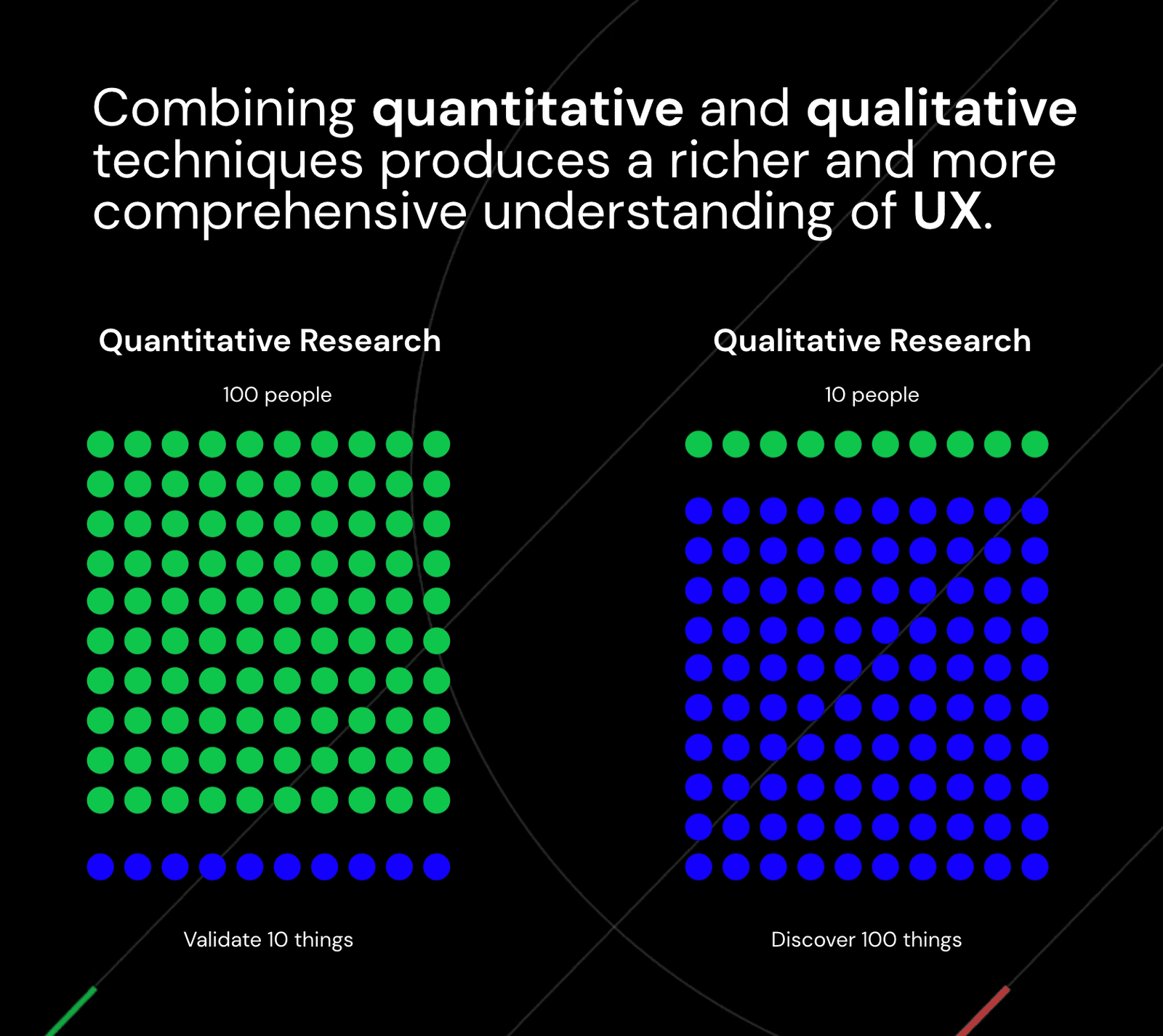The user experience is paramount in the digital product design landscape. If your user can't figure out how to use your product, it's useless. But user research and user insights are often overlooked by companies that need to build digital products. In this blog post, we will describe, based on our experience, working with diverse clients in multiple industries, ways to better gather user insights at every stage of the development process, from initial strategy, feature testing to Quantitative metrics after launch.
Take a look at this article about how we have been part of a product that evolves and iterates over time: Boosting PlayStation's esports presence, one phase at a time.
What is user research, and why is it important?
User research is the process of gathering insights about your target users. This includes their behaviors, motivations, needs, preferences, and pain points. As part of this process, you'd also want to understand how they currently solve a problem or complete a task while interacting with a product they are now using (or not using). This information is used to guide the strategy for your development and ultimately help you build what users want.
Big companies like Apple, Google, and Amazon do a lot of research into their users and target audience. They know who these people are, how they behave, what they think about specific topics. Working with Fortune 500 companies has allowed us to build products with tremendous market penetration and higher user engagement.
Types of User Research: Qualitative and Quantitative Research
There are different types of user research, and they can be categorized into Qualitative and Quantitative analysis. Some companies will do both, but generally, you need to start with one to get the ball rolling.
At a high level, Qualitative research is used to gather rich insights about your target audience, like their behaviors, motivations, needs, preferences, and pain points. You can get this info either through in-depth interviews or focus groups. These help you dig deep into users' psyche and get a lot of feedback about the product strategy (which is often done early on). The downside with Qualitative research is that it's too time-consuming and costly for companies with a limited budget for product development (which is usually the case).
Most companies need to start with a more cost-effective approach like Quantitative research. This includes surveying your target through online questionnaires and polls. You can then use this insight to understand their needs and motivations, plus where you can improve your product or service.
Quantitative research is excellent for getting product insights and feedback early on in the development process. This helps you validate a new idea or build off an existing feature to make it even better (or worse, depending on how well you ask the questions). The downside with Quantitative research is that it can't provide any Qualitative insight into your group of users. You won't know if your assumptions are correct and how users feel about a product.
How to conduct user research for your business:
To conduct user research, you'll need to define the goals of the project first:
- What are we trying to learn from users? How can this help us build a better product or service?
- What do we want the result to look like (i.e., our hypothesis)?
- You want to create a mobile app, but you have no idea what features and how users would use it. This is where user research comes into play because you're trying to figure out:
- What does my target audience want? What are all of their pain points and challenges that I can potentially solve? How do they want to be addressed?
- What features or functionality of the app would help me address those pain points and meet the needs of my target audience (i.e., hypotheses)?
You now have a goal for your research:
- Understand what users want from an app.
- Learn about their pain points and challenges.
- Identify which features would help them.
You can either start Quantitative research to confirm or challenge your hypothesis (or do it at a later stage). Or begin with Qualitative research to gather rich insights about your users.
Why you should do more than talk to users but also observe them in their natural environment
You can't rely on just asking users what they want because even though you have all the data in front of you, you don't know how accurate it is. Moreover, it's tough to understand why someone would choose one thing over another (i.e., features), critical for product development.
It would be best to observe what users do and how they're using your product or service to get around this. You have to see them in their environment and develop an "insider" view into a user's mind. This type of research is commonly called User Observation.
User Observation can help uncover insights that would otherwise go unnoticed when you're asking questions. It's a great way to get data from people that wouldn't reply to a survey or ask for feedback in an interview. Observing users gives you a chance to discover problems before they happen and understand user behavior (i.e., how they interact with the product/service).
Observing your target audience can also help you develop your business strategy in the following ways:
- Learn what users do with your product and how to improve it.
- Figure out who is using (and not using) your product. Why? What are their needs and motivations?
When to do user research: discovery phase, validation, and user metrics after launch
Research is nothing without action, so you need to know when and how to apply the results. The first step is to validate feedback before spending time or money building a better product or service based on an assumption (which can waste a lot of effort and resources).
Before you decide your business strategy, you want to ensure that your research is valid (i.e., there's a demand). This means you need to verify whether people want your product/service or if the opportunity is worth pursuing.
User research should also come at launch and after each feature update if you already have a product or service currently in the market. You'll want to gather user feedback about your product/service to know what needs improvements. This is where Qualitative research can help uncover critical insights into how users perceive your offering. It also allows you to see what they like and don't like.
It's essential to always keep doing research, and this will help UX teams stay ahead of the competition. Read why UX Design Doesn't Stop After You Launch: How to Keep Improving.
The benefits of doing good user research for digital products
There are several benefits to conducting user research, but one of the most important is that it helps you build better products and services. It also enables you to save time and resources by avoiding false assumptions. By researching before you build (i.e., doing discovery research), you're not just getting more valid data but information about how users perceive your digital product or service.
This will help you understand what they like and dislike about your product/service, enabling you to improve it. It can also help identify specific features users would want to see if they had a choice. Without research, you'll be left with assumptions based on your perceptions of things (which aren't always right).
Now that you know what user research is and the different types of it, you can now apply it to your business strategy. Conducting user research may seem like a lot of work at first glance, but once you get into the process, you'll realize that there's no other way to prove whether or not your assumptions about users (or product/service improvements) are valid.
User research is an often overlooked but integral part of building a digital product. Whether designing an e-commerce site or developing a new mobile app, it's essential to know how your users think and what they want from your product. Luckily for those who need help with this process, at Zemoga, we offer user research services to give you the data you need to make informed decisions about your project before spending time and money on development. Let us work with you to create solutions tailored just to your needs! Get in touch today. Our team would love to hear more about your project so we can help give it the best chance at success possible!

